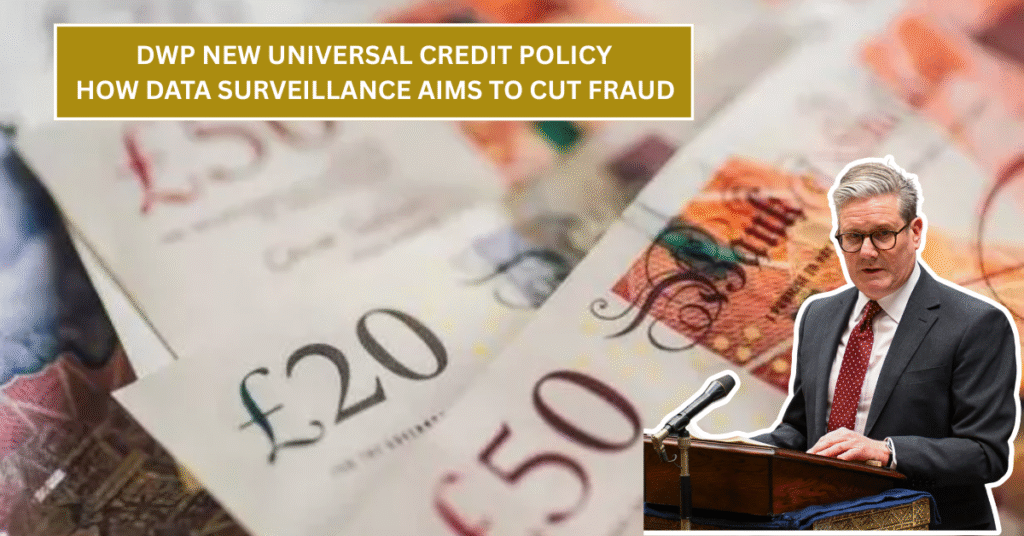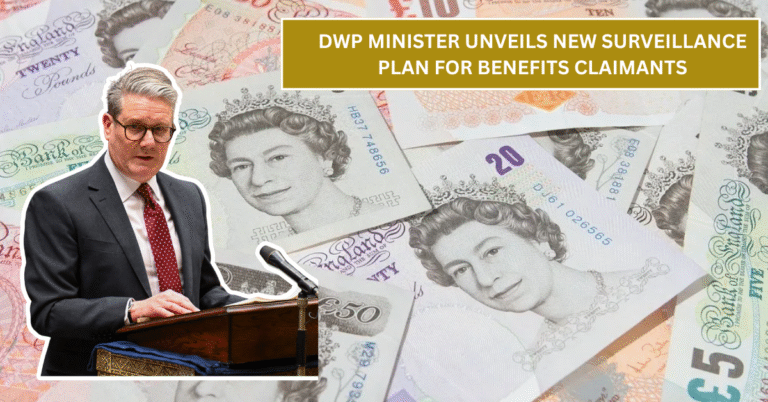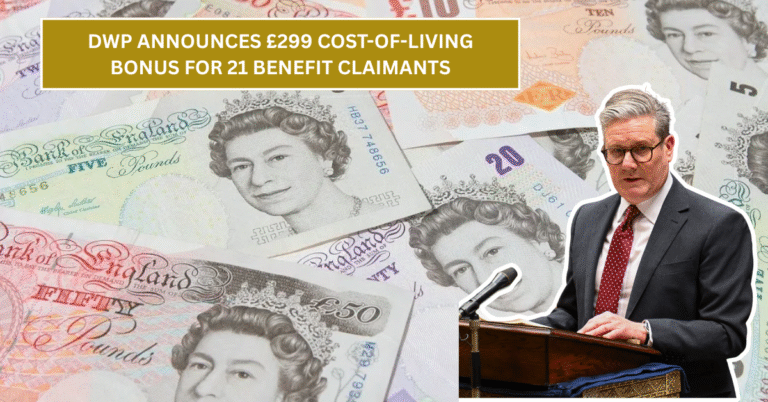
The UK’s Department for Work and Pensions (DWP) has introduced a new ‘data surveillance’ policy for Universal Credit claimants. Many people wonder what this means and how it affects them. Simply put, the DWP is using smart technology to track unusual spending patterns and check financial information daily to catch potential fraud quickly. This policy is designed to protect both the system and honest claimants.
For younger readers and first-time claimants, understanding this policy can feel tricky. It’s important to know that the DWP uses a risk-based algorithm to flag suspicious activity by checking data from banks, HM Revenue & Customs (HMRC), and credit files. While this might sound intrusive, there are protections like manual reviews in place to make sure genuine claimants are treated fairly.
What Is the DWP’s Data Surveillance Policy?
This Article Includes
- 1 What Is the DWP’s Data Surveillance Policy?
- 2 How Does the Algorithm Work?
- 3 What Data Does the DWP Check?
- 4 Why Does the DWP Use This System?
- 5 Are There Safeguards for Genuine Claimants?
- 6 What Should Claimants Know and Do?
- 7 How Does This Affect Younger Claimants in India?
- 8 Conclusion: Balancing Security and Fairness
The new policy uses technology that constantly watches over claimants’ financial activities to spot any strange or unusual spending. This is done through an algorithm, a type of computer program, that looks for patterns that don’t match a person’s usual behaviour. For example, if someone suddenly spends a large amount of money in a way that seems odd, the system will flag it for review.
This kind of ongoing checking helps the DWP identify potential fraud faster than before. Fraud means claiming Universal Credit when someone is not eligible or lying about their situation to get more money. The policy is meant to stop this kind of wrongdoing and ensure support goes to those who really need it.
How Does the Algorithm Work?
The risk-based algorithm collects and analyses different sets of data daily. It looks at bank transactions, tax records from HMRC, and credit file information. By comparing all this information, the system learns what normal spending looks like for each claimant. If it detects big changes or unexpected transactions, it alerts the DWP to take a closer look.
For example, if a claimant’s bank shows income that doesn’t match their reported earnings, or if their spending suddenly increases dramatically, the system flags these as risks. It’s like having a digital watchdog keeping an eye on financial activity to help reduce fraud in real time.
What Data Does the DWP Check?
The DWP collects three main types of data to support this system. First, it reviews bank data, which helps understand how money flows in and out of a claimant’s accounts. Second, it checks information from HMRC, which oversees tax details and earnings. Lastly, it accesses credit file data, which shows borrowing and repayment patterns.
By combining these three sources, the DWP builds a more accurate picture of each claimant’s financial situation. This makes it easier to spot fake claims or fraudulent behaviour. However, this also means that claimants should be careful about providing correct and honest information during their application.
Why Does the DWP Use This System?
The main goal is to prevent fraud and make sure Universal Credit money goes to the right people. Fraudulent claims cost a lot of money and can delay or reduce support for honest claimants. By using daily checks and a smart algorithm, the DWP hopes to catch fraud earlier and reduce losses.
This new approach also saves time and resources by speeding up fraud investigations. Instead of relying only on random checks or manual processes, technology helps target suspicious cases more effectively. This benefits everyone by creating a safer and more trustworthy welfare system.
Are There Safeguards for Genuine Claimants?
Yes, the DWP has set up important safeguards to protect honest claimants. When the algorithm flags a case, it does not automatically block payments or punish anyone. Instead, these cases are reviewed manually by trained people who double-check the information.
This human review helps avoid mistakes and ensures that people who are genuinely eligible for Universal Credit are not unfairly affected. Claimants will also have a chance to explain any unusual activities or provide additional evidence if needed. The DWP emphasises transparency to keep the process fair.
What Should Claimants Know and Do?
If you are claiming Universal Credit, it is important to be honest and accurate in your application and updates. Always report your income and changes in your financial situation promptly. Keep track of your spending and bank transactions so you can explain any unusual activity if asked.
Understanding that the DWP’s new policy is designed to protect you and the system can help ease worries. Instead of seeing it as ‘spying,’ think of it as a security measure to stop fraud and keep welfare support available for those who need it most.
How Does This Affect Younger Claimants in India?
Many young Indian readers might look to the UK’s welfare policies as examples of how digital technology is changing public support systems worldwide. While India’s social welfare programs are different, the use of data-driven technology to stop fraud is becoming a global trend.
Being aware of these kinds of policies helps young people understand the balance between data privacy and fraud prevention. It also shows how governments use technology responsibly to protect public funds and assist honest beneficiaries effectively.
Conclusion: Balancing Security and Fairness
The DWP’s data surveillance policy for Universal Credit is a modern step to reduce fraud using advanced algorithms and daily data checks. While it raises concerns about privacy, strong safeguards and manual reviews ensure that genuine claimants are treated fairly. For younger readers and claimants, the key is to stay honest, keep records, and understand that this system aims to protect both the welfare program and the people it serves.
As digital monitoring becomes more common in welfare systems worldwide, knowing how algorithms and data checks work can help users feel more confident and secure. Trust and transparency go hand in hand with technology, making social support safer for everyone in the long run.






